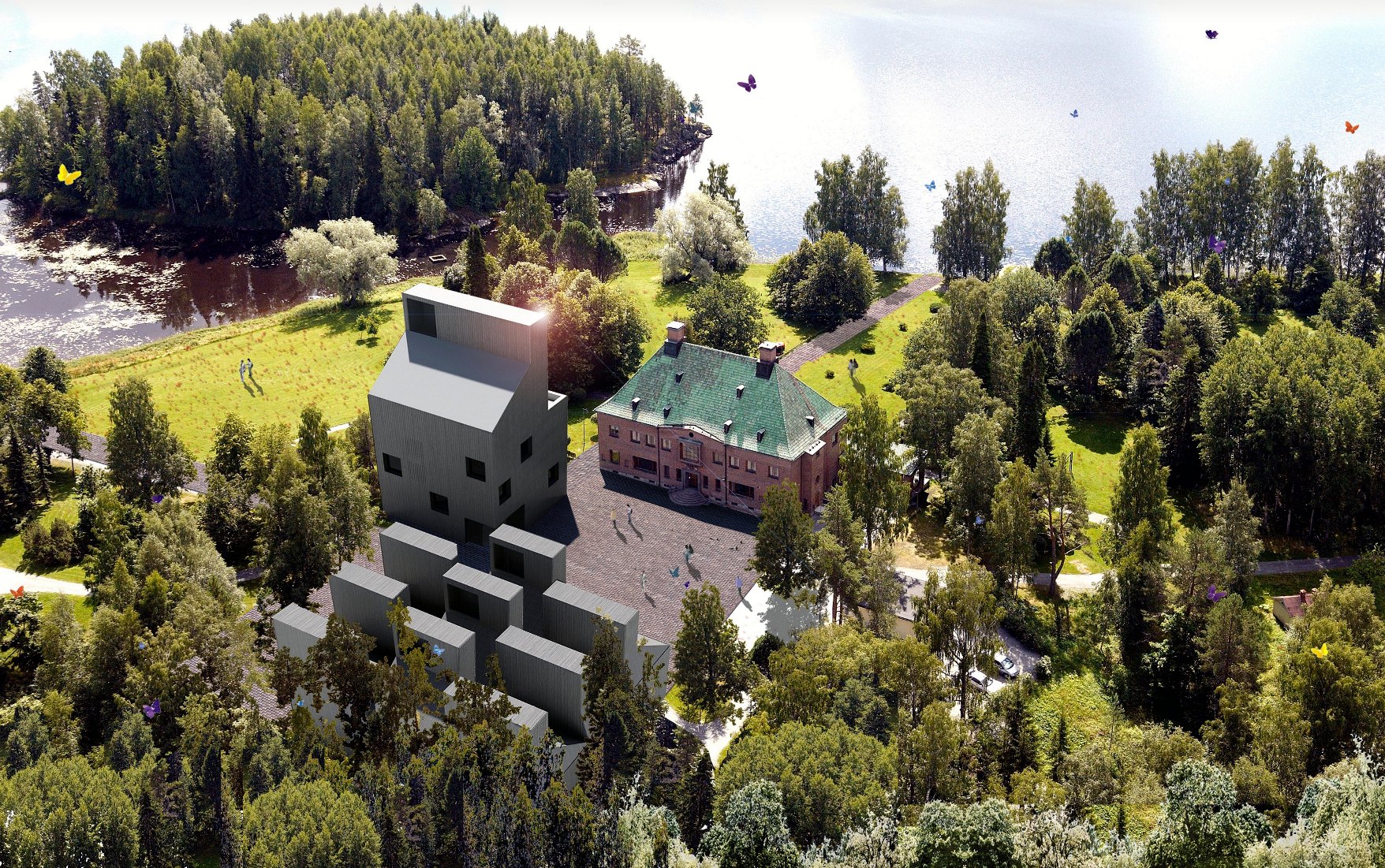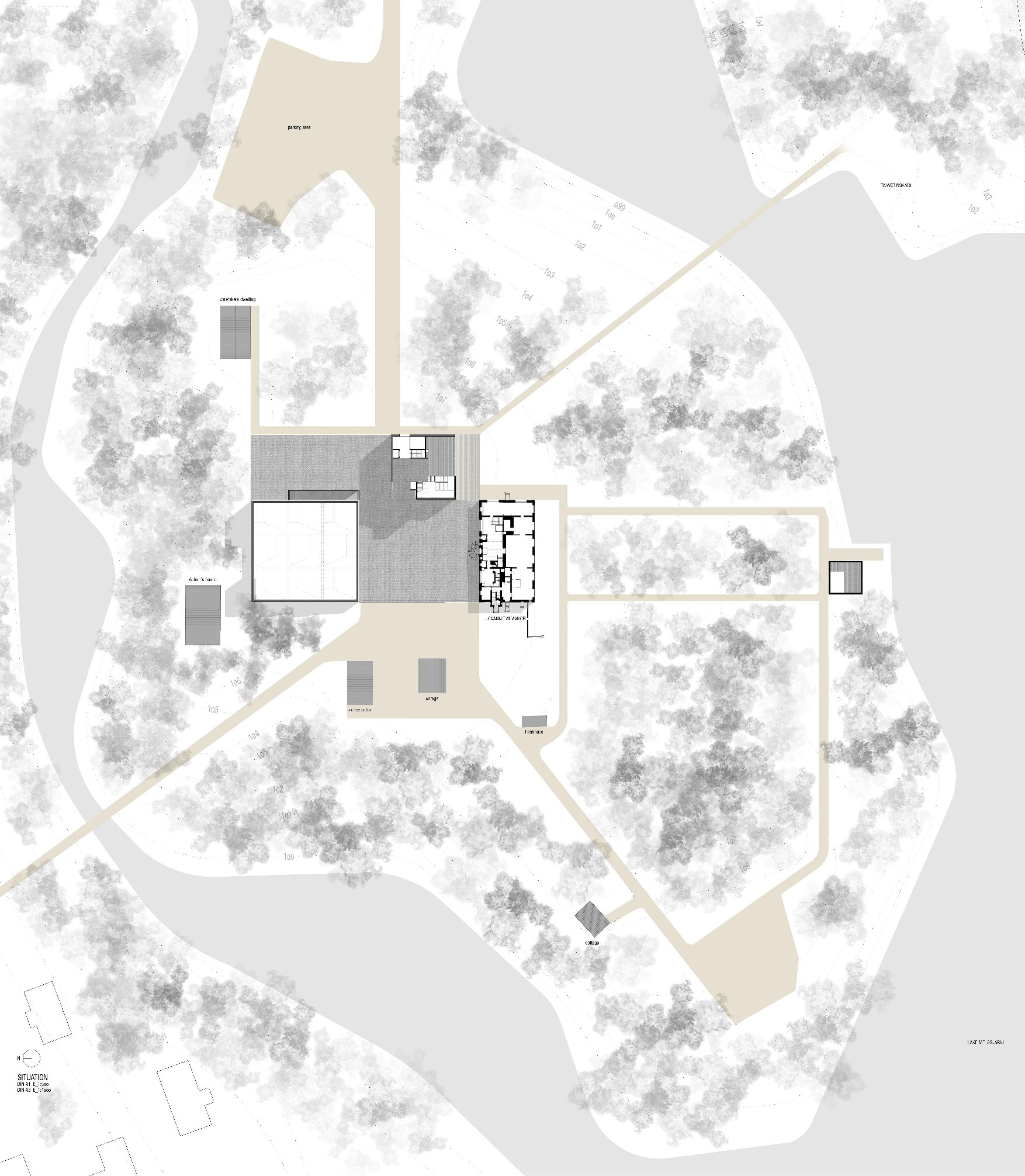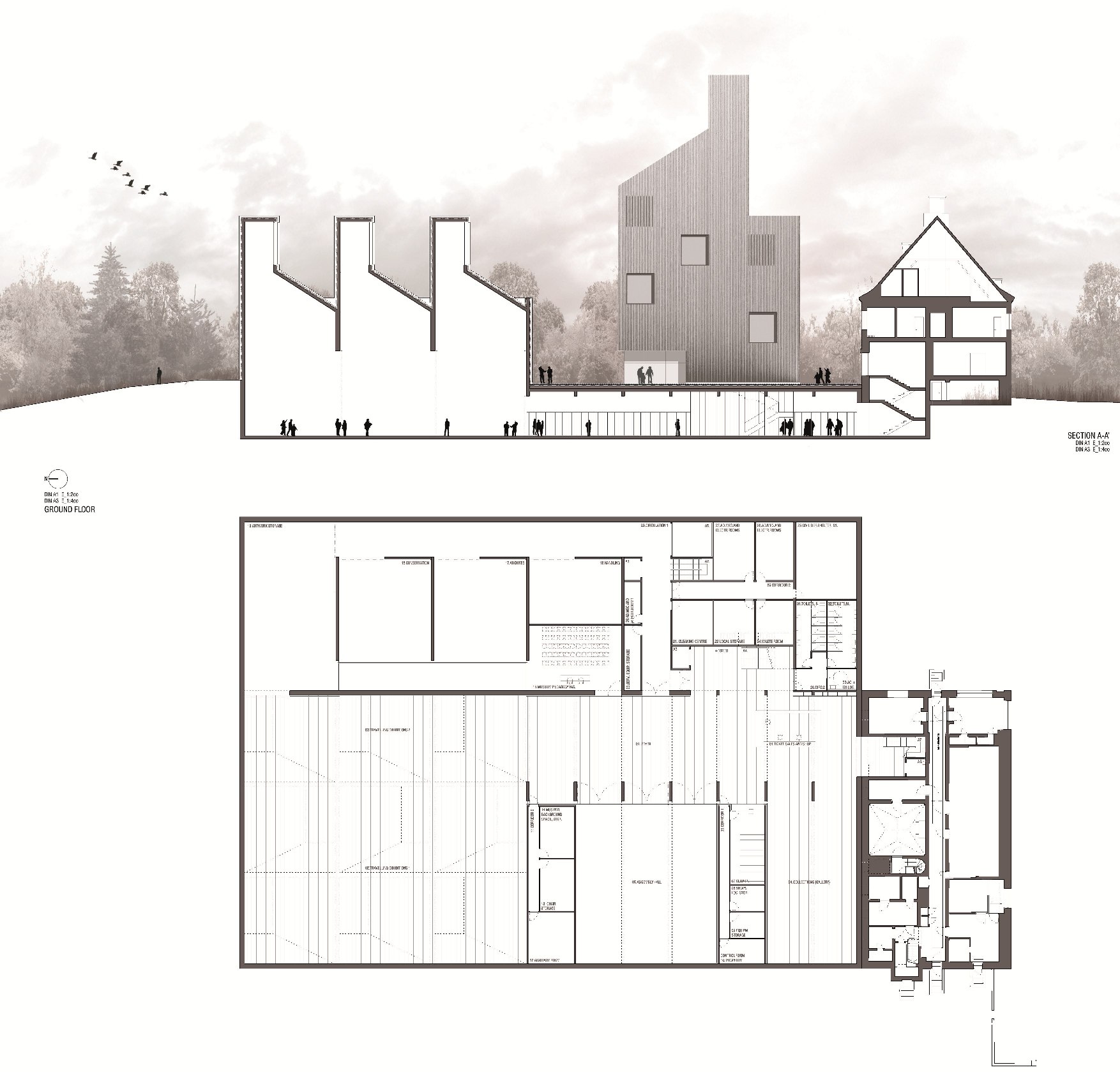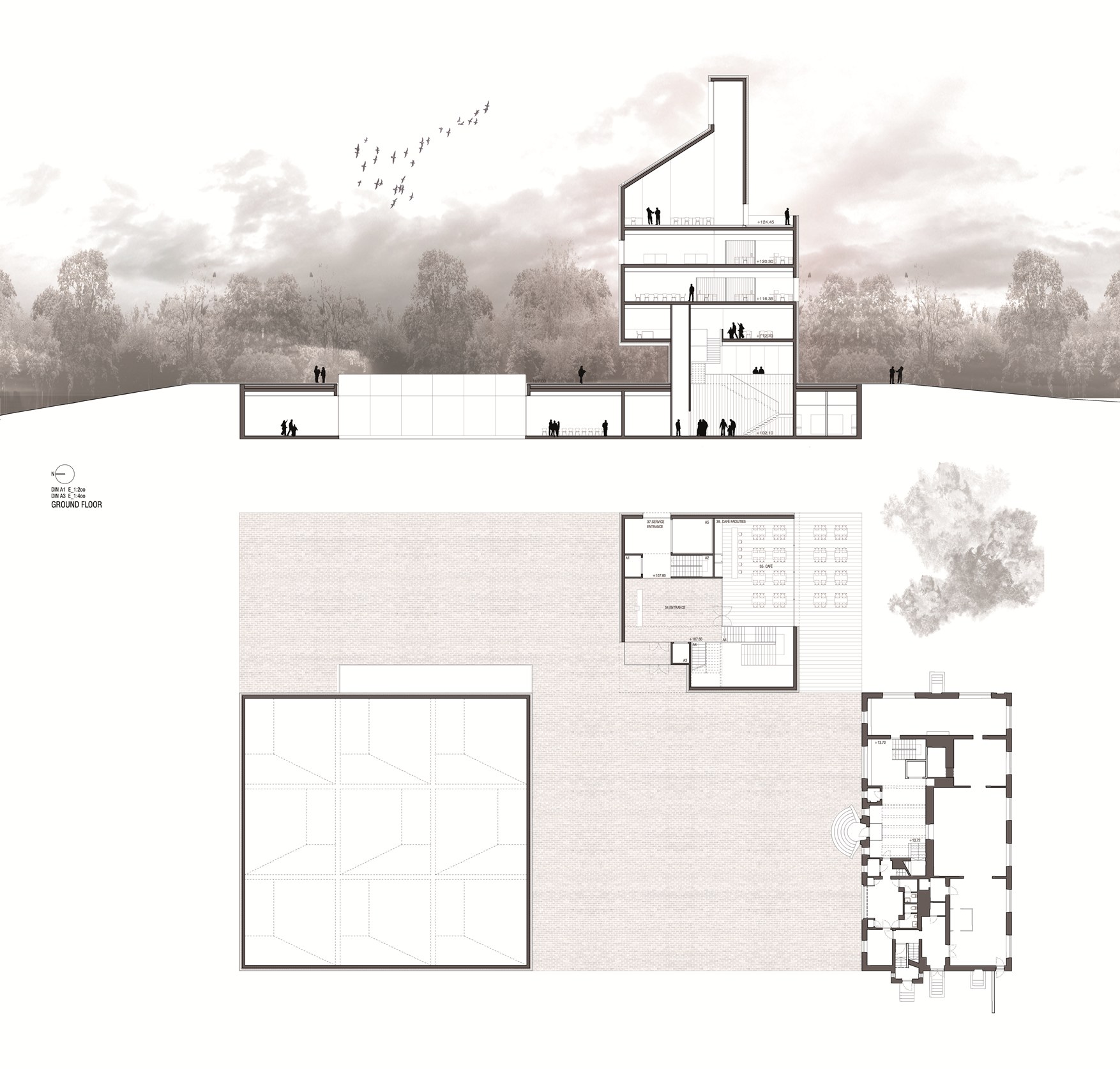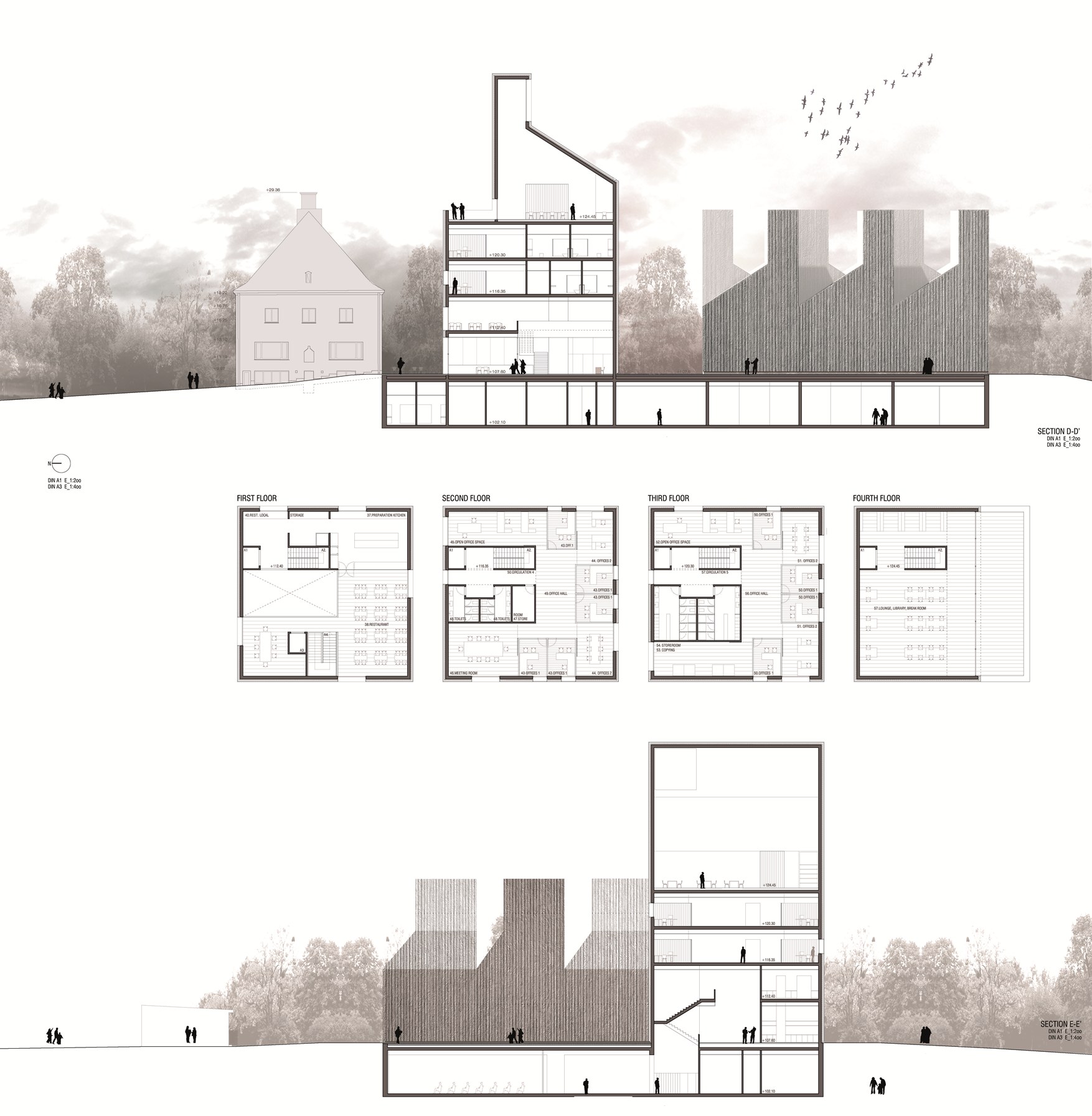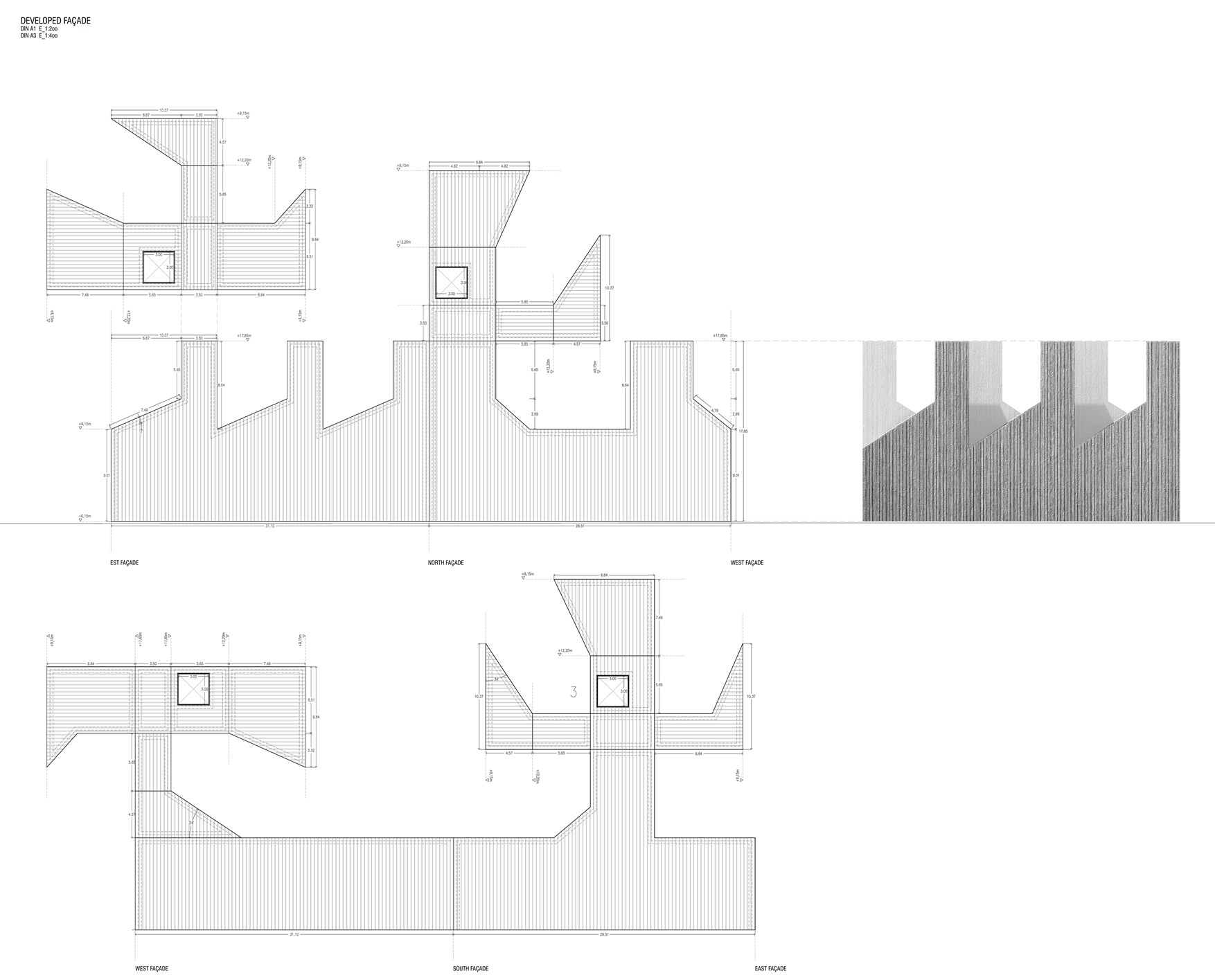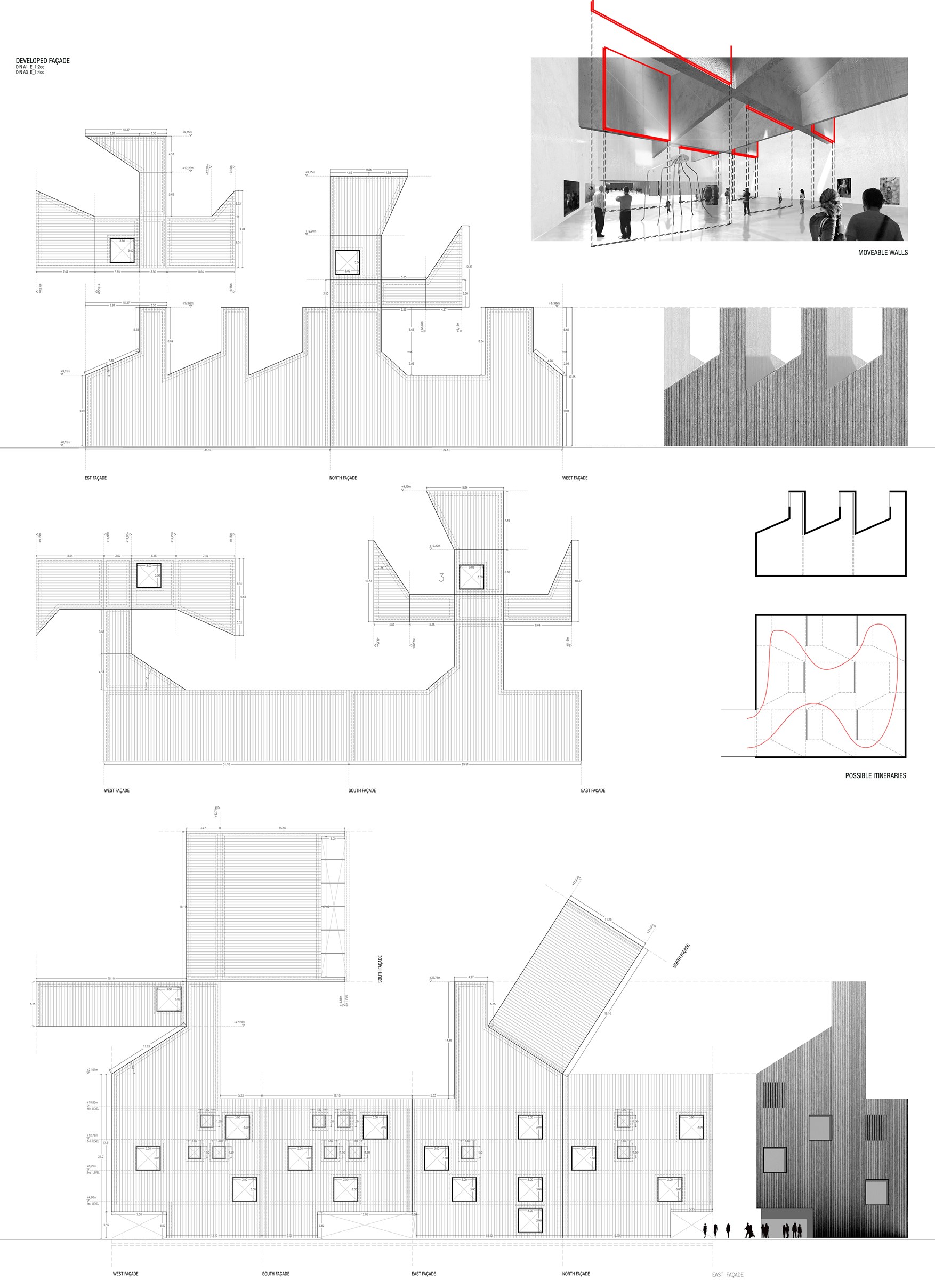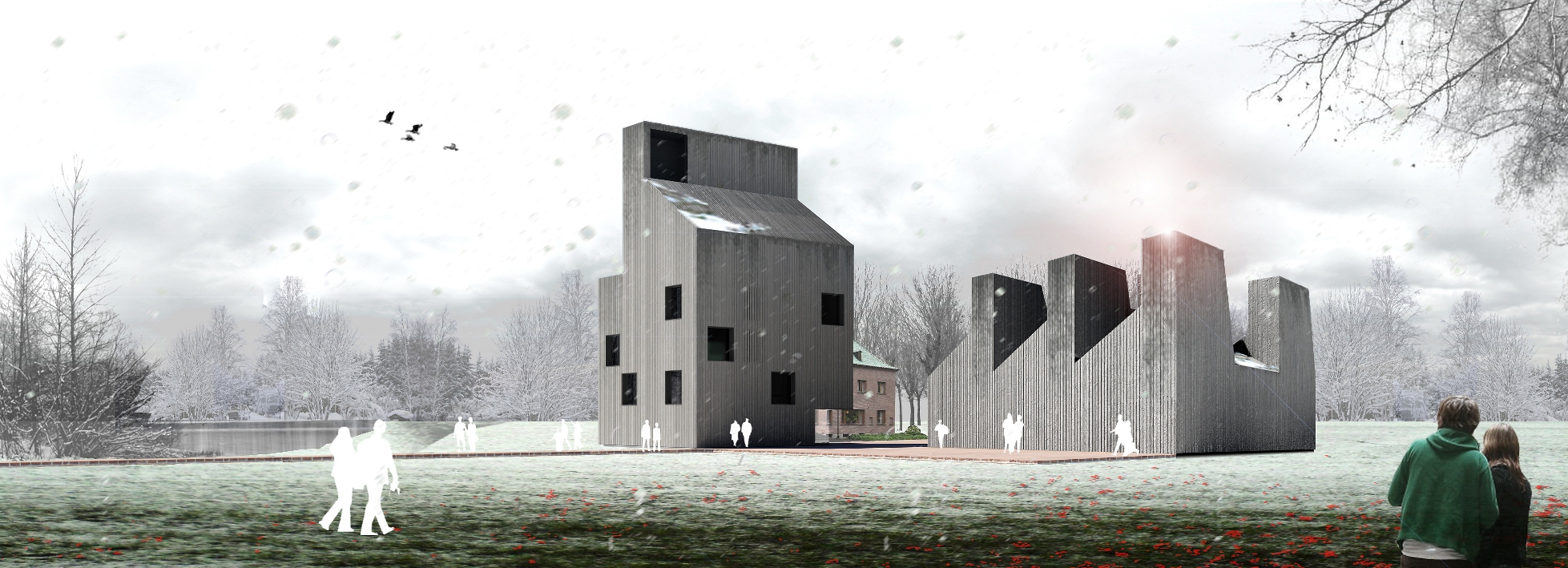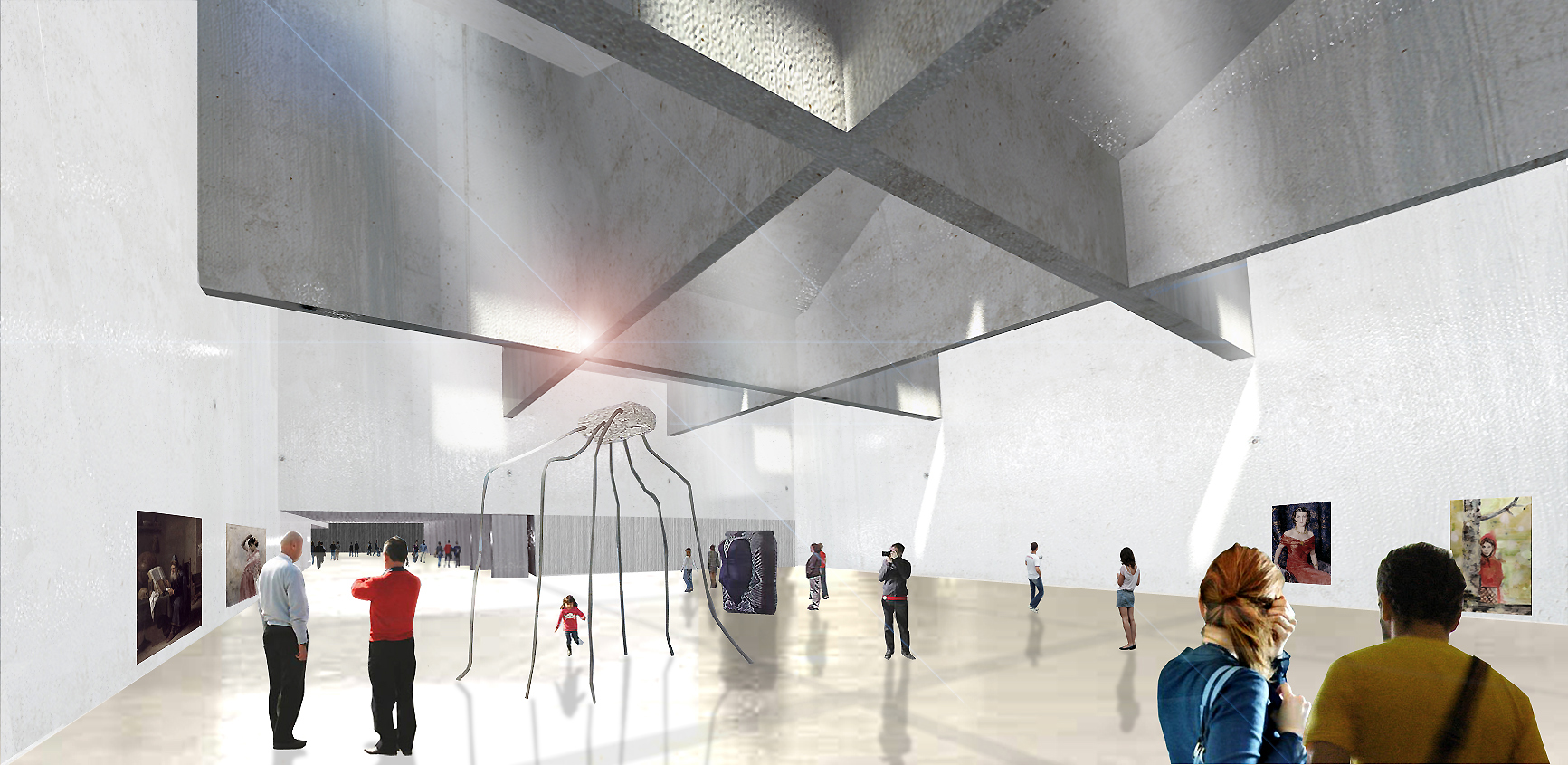☉ Serlachius Museum Gösta is a proposal by Josep Ferrando Marc Nadal and David Recio for Serlachius Fine Arts Foundation in 2011. It is located in Mänttä Finland in a forest and riverside setting. Its scale is medium with a surface of 3.000 sqm a budget of 15.000.000 € and a ratio of 5.000 €/sqm. Key material is wood. Review the 16 proposals for the same competition.
The project is joined to the place in silence and built a clear in the wood like an art´s door. The proposal for the Gösta Serlachius Museum´s extension recognize the sequence of the existing buildings that, due to the scattered placement, leaves get inside the forest between them, incorporating and making them isolated elements. This disposition which answer well to his old residential use, about the coexistence of the living and the nature, is required a reformulation when the use of these elements become public. Then the whole proposal need a door, a transition´s place between nature and architecture, which be recognized as a threshold and at the same time it has to be able to host many people to different collective proceedings.
The buildings which take part of the development dialogue with the existing and configure with this one an entry’s place, an agora from which recognize de “door”. It is about a horizontal plan of brick which provides of continuity and it gets add, giving to Joenniemi Manor more importance. This plane is not just a skin, is not just a pavement, actually the place has a thickness, it is a building under the +107,6m, which guarantees the continuity between the different buildings. The conversion from one part to three buildings, remembering that one is under this one, guarantees the whole museum’s continuity and at the same time it is able to keep the human dimension of the current parts. Two new pieces come out of the ground and from a triad with the old one, framing the entry and opening the agora to the west side. This place become into a clearing in the forest.
These buildings take the advantage of the local industry and get materialized as different wood volumes. One of them, recognize the rhythm and the milestone’s skill which have the watchtower and rises hosting the public and service access´ museum and the bar on his ground floor, while the offices are located on higher floors, ending the roof top with the library. The other volume is developed in horizontal and appears as a forest of skylights which gives continuity to the surrounding trees. To work in section is important due to the fact that placing the main exhibition rooms underground reduce the impact that, on the contrary, would produce an extended and too high building. This travelling exhibition is covered by a structure that makes possible a completely open, free and more flexible space. At the same time, it builds a game of shadow and lights with the nine skylights. The light entrance can be modified through some moveable panels. The skylight section permits to put sliding vertical walls that can glide up and down sectorizing the big exhibition room in different and smaller rooms if necessary.
The higher building introduces and guides us almost without noticing to under the main square through a double high space. An asymmetric stair takes us through this void and lets us at the +102.10 level. Is there where we find the big main hall of the museum, a place from where we can move around in a centripetal way to the different parts of the programme. The assemble hall appears as a wood dark volume like a big furniture of high dimensions that organize both sides, the travelling exhibitions and the collection permanent exhibitions. Behind the double space, there is the technical part of the museum which takes the most private parts and thanks to its longitudinal development guarantees a well function of all the rooms. The hall also guides us to the existing building in a way that is only in that point where the contact takes place letting frees the whole façade of possible “parasites” that breaks the current and recognizable image of Joenniemi Manor.
This way of understand the proposal, as a building that is placed obliquely to the existing buildings, allows to keep on functioning during the extension process. Two materials configures the project: brick for the horizontal plane, and wood for the volumes, giving a warm feeling to the place and adding the textures of the trees to the vertical plane. The construction of this elements would follow the wood construction tradition of the place and, consecuently, could be a light structure that make easier the implementation.



